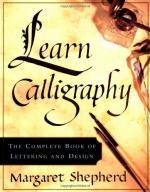|
This section contains 914 words (approx. 4 pages at 300 words per page) |

|
The patterning of Hebrew texts into ornamental motifs is a medieval art form that bears the modern name of micrography, "minute writing." Within an artistic tradition almost universally consigned to dependency on one dominant culture or another because of its minority status, this distinctive calligraphic device represents one of the most original aspects of Jewish art.
Emergence of the Art
Micrographic decoration can be found on manuscripts from Yemen to Germany, but its historical origins lie in the eastern Mediterranean, during the first few centuries of Muslim rule. The earliest dated example is the Cairo Codex of the Prophets written in Tiberius in 894/5 CE by the renowned scholar Moshe ben Asher. In the manner of near-contemporary Qurʾāns, the manuscript contains five "carpet pages" of geometric and floral motifs, but six other full-page compositions are made up of elaborate micrographic patterns; simpler lettered designs are scattered...
|
This section contains 914 words (approx. 4 pages at 300 words per page) |

|




